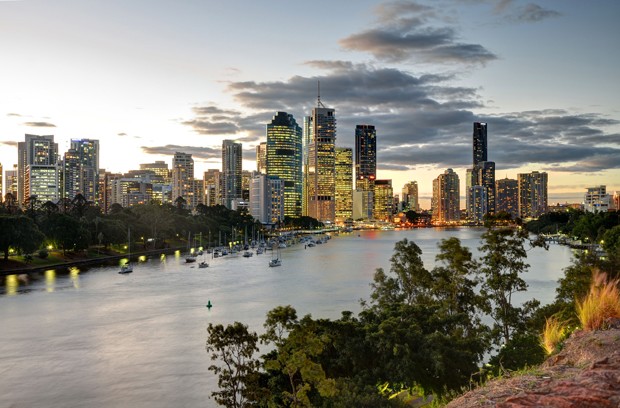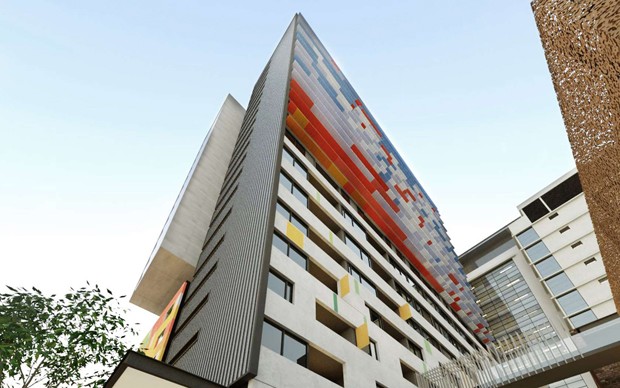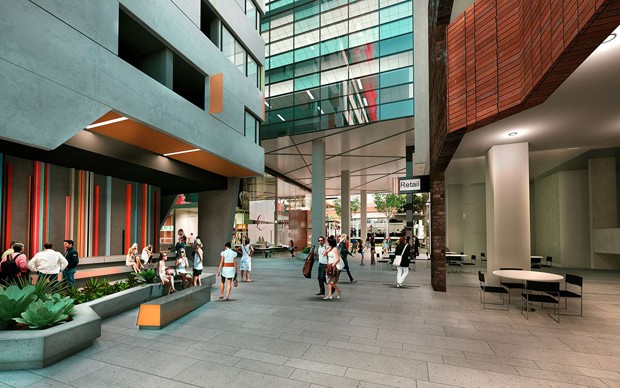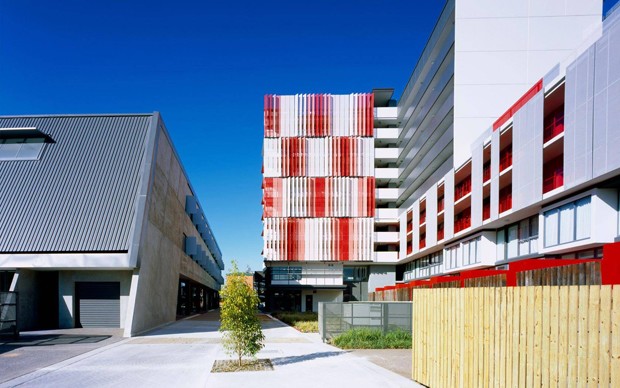Liam Proberts is managing director of bureau^proberts. His recently completed projects include SILT Apartments at Brisbane's Kangaroo Point and M&A, a retail, commercial and residential development at Fortitude Valley.
Architecture & Design spoke to Proberts about the changing demographics in Spring Hill area, how limited budgets have shaped design in Brisbane and why camaraderie in the design community is strong in Brisbane.
You grew up in Spring Hill in Brisbane. How much has that area changed from when you were young?
Spring Hill has changed an enormous amount as time has gone by, although it has been more of a social change than a change led by built environment or planning. Spring Hill was a vibrant place in the 1970s with a lot of families of diverse backgrounds and circumstance mixing in together.
At that time, it was part gritty inner suburb, part gentrified city annex and part government hub. The strong character of the area and some of the changes that occurred at that time – in housing and civic buildings – I am sure had a strong influence on my becoming an architect and my approach.
The smattering of projects that had occurred in the area were generally adventurous and respectful of the fabric, creating a rich and exciting built environment. For example, the Centenary Pool and the Spring Hill baths, the terrace houses and some of the contemporary interpretations of the worker’s cottages of the time.
Since then the change in the suburb has slowed as other areas have undergone renewal. It is still a great place to live, but Spring Hill has lacked a heart that is a feature of most good suburbs and also became divided by growing traffic. The families have slowly dwindled due to the lack of amenity making it difficult to maintain a critical mass of services.
This is in contrast to other areas where livability, amenity and services are encouraged and improved to make good suburbs. I think Newstead is a good example of that and it will be good to see the new local plan for Spring Hill address some of these issues.
How do you think Brisbane approaches design differently to other cities in Australia? How is this reflected in your work?

Brisbane skyline. Image: Wikimedia.org
In terms of a market, Brisbane is pretty frugal in comparison with Sydney or Melbourne. It is a little more challenging to do larger projects here as the market is a little tighter and we have periods of growth demand that can go up and down.
However, I feel that this has made Brisbane designers clever at working with tighter budgets and adept at getting a lot out of less. Our focus is on where the true value lies, so you now see many good, honest buildings in Brisbane that are unique and are building the character of our city.
We have learned that you don’t have to spend lots of money to produce good quality buildings or be adventurous. It’s almost like the Gold Coast in a way – while our locals are aspirational, they also have a casual approach to life and our climate encourages us to be daring with design, and do interesting things to incorporate this unique blend of lifestyle.
We are also seeing projects respond to a changing need in Brisbane for diversity in living. In the past, Brisbane was seen as a collection of suburbs with a city to go to work in. Urbanisation is creating a shift in the way people are living and making Brisbane a dense, urban, liveable city.
Today people are making the choice to live in apartments, instead of a house. Multi-residential living no longer has a stigma in Brisbane, and we see singles, couples and young families taking up long-term residence in inner city apartments.

M&A by bureau^proberts
How does your approach to design help to meet the objectives of clients and developers? What is the role of design in creating successful commercial projects?
It is a combination of understanding the problems, of understanding the aims of the project and the challenges that these present. We use formulas and strategies to respond to these effectively and to get the right balance – there is actually a lot of maths involved. Efficiency is so important to effectively meet the client’s needs. However, in the end we want to be adventurous in finding solutions that exceed the client’s expectations, create value for them and also make a really positive contribution to the city.
I think we achieved that with M&A, our mixed-use multi-residential build in Fortitude Valley. There was a lot of thought that went into how we could best activate what was ostensibly a quiet corner of Fortitude Valley. We worked with the local council on the pedestrian laneway that runs through it and we created a tenancy mix that has significantly contributed to the area and really livened up that corner of the valley.

M&A Laneway
The other aspect that is deeply engrained in our work is the use of integrated art in our projects. While the types of residences people require is changing, a desire for a strong sense of identity has not. Creating buildings that are individual and distinguishable helps both the user and the developer to resonate with its local context.
We use many things to achieve this, but working with artists is key to our work. Our approach is to embed art not just physically into the project, but most importantly into a building’s idea, and therefore it becomes much more meaningful than being a piece of art just plonked onto a building to look good.

Central Residential
Are there any lessons other cities could learn from Brisbane’s approach to design?
In Brisbane our engagement with the subtropical climate is significant in our work. This is evident in the work you see and there is a strong character emerging around this in combination with the frugalness and the sense of adventure I discussed before.
I also see a strong camaraderie in the design community here, which is quite peculiar from an outsider’s perspective. I think this comes from a mutual understanding that we are in a unique part of the world and we all have a great opportunity to shape what is a relatively new and exciting city by doing unique work.
What’s the best piece of advice anyone has ever given you?
“Listen”. It’s probably a collective understanding of advice from many.
With hindsight, are there any projects you have completed that you wish you could go back and redesign?
Absolutely. I don’t know if I want to mention specific names though! Architecture has a sense of permanence, and it’s not that I think any of our past projects are ugly or bad, I just think with the knowledge that we have now about the patterns that make up Brisbane in an urban design sense, there are instances where we could have better applied this knowledge in some of our earlier work.
Images: bureau^proberts

